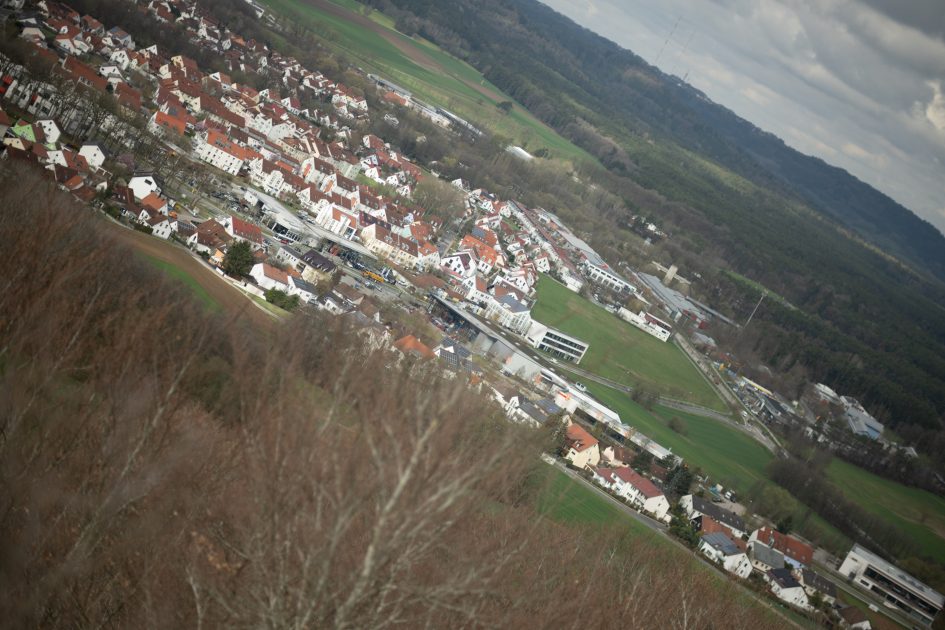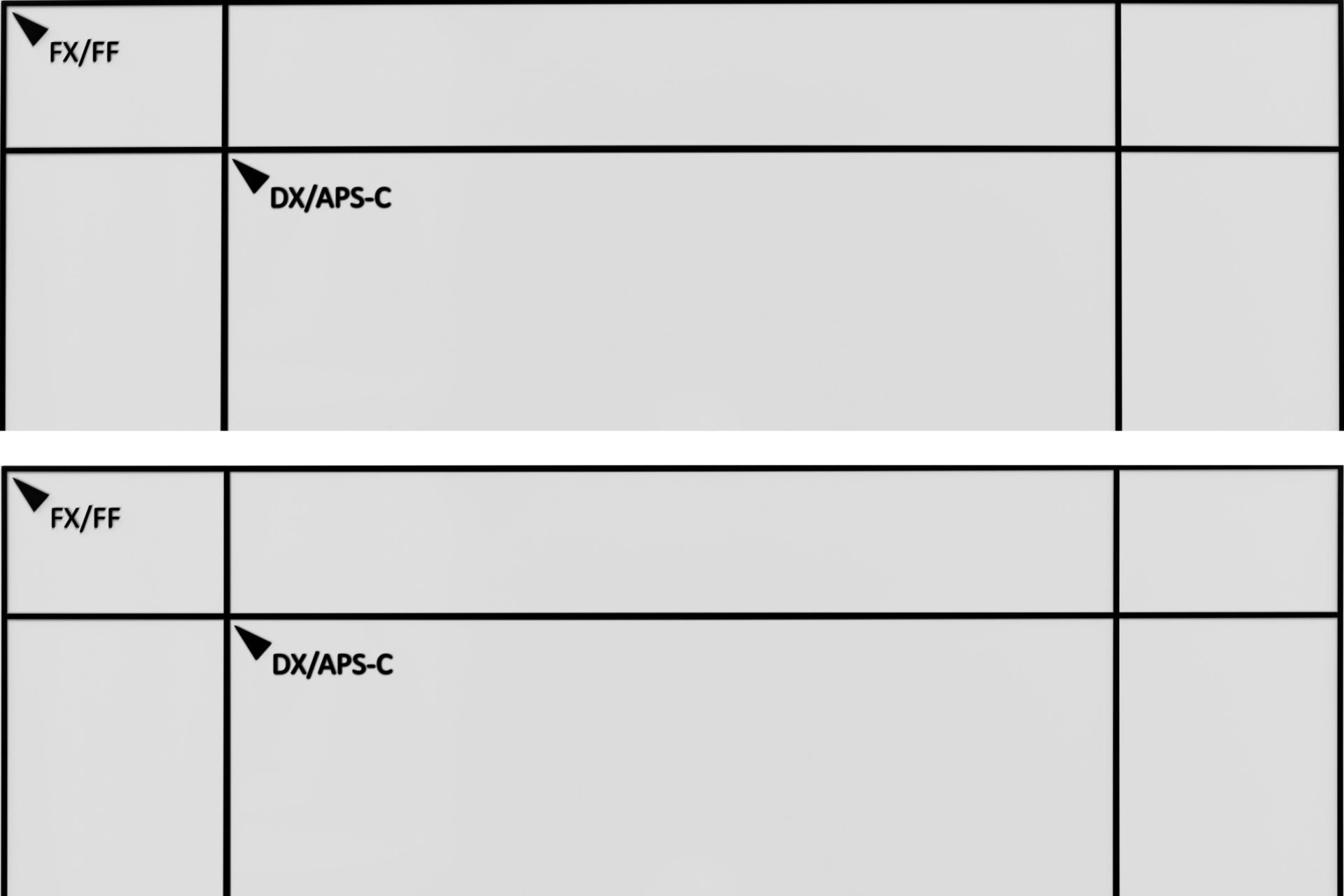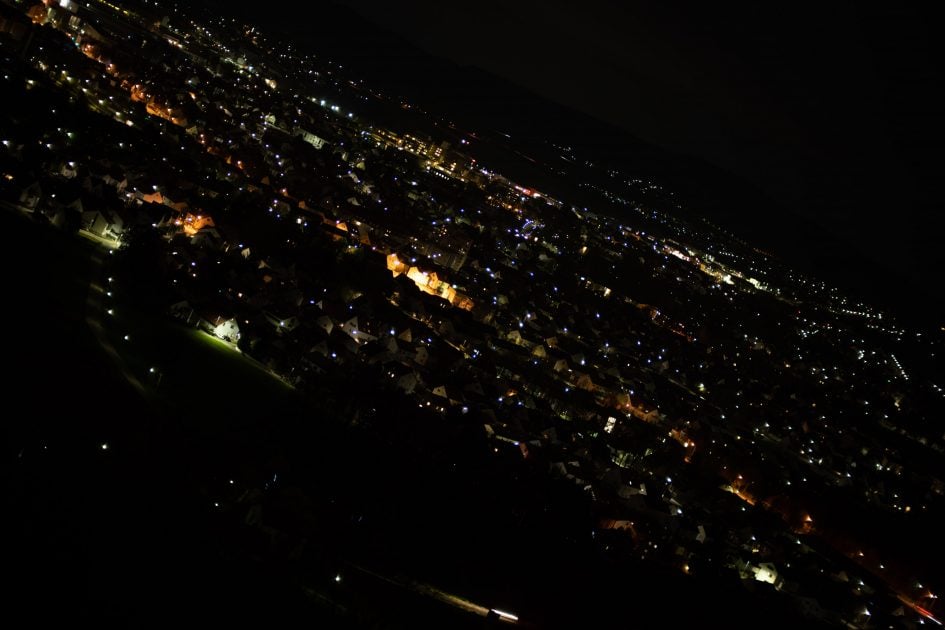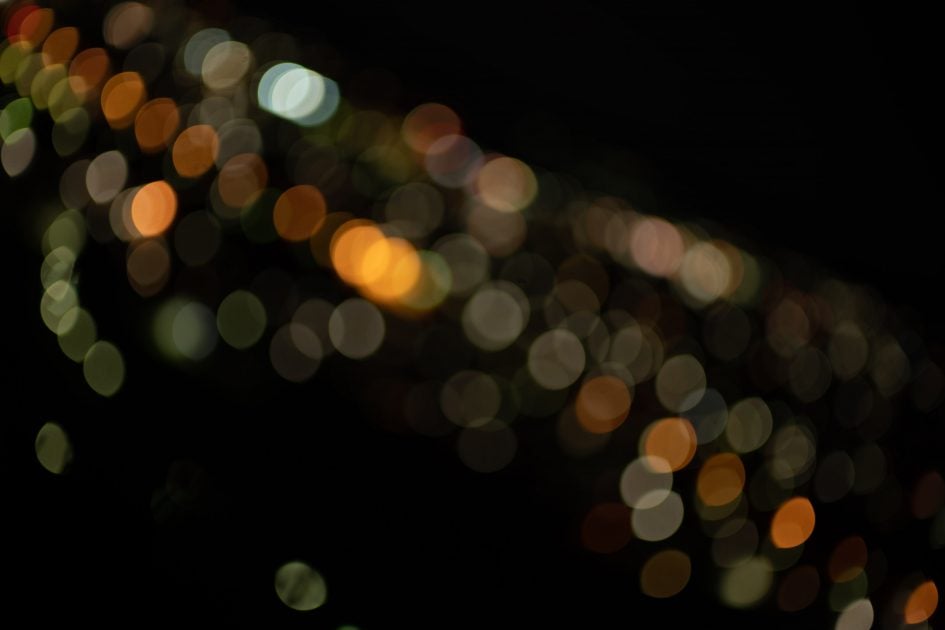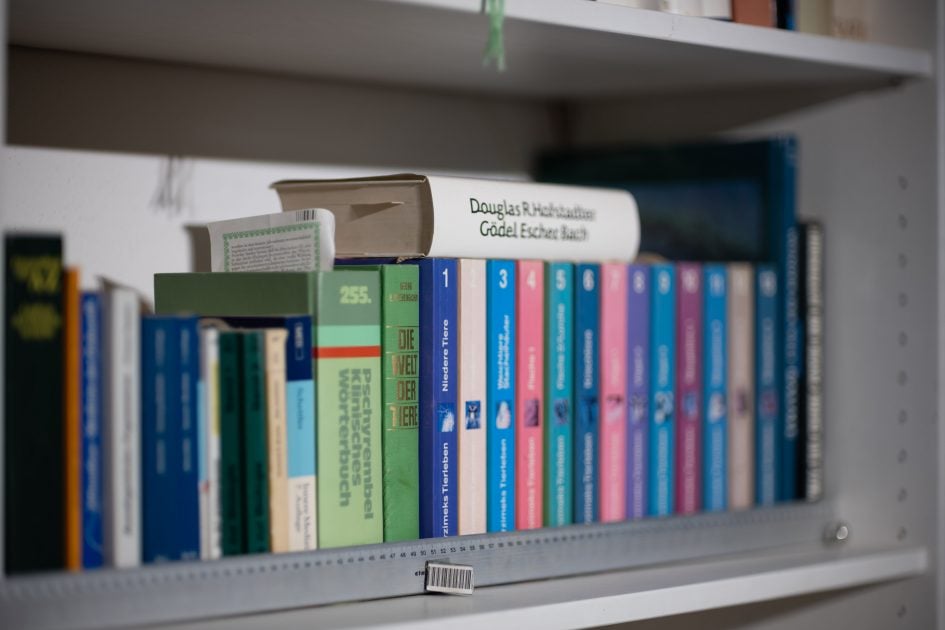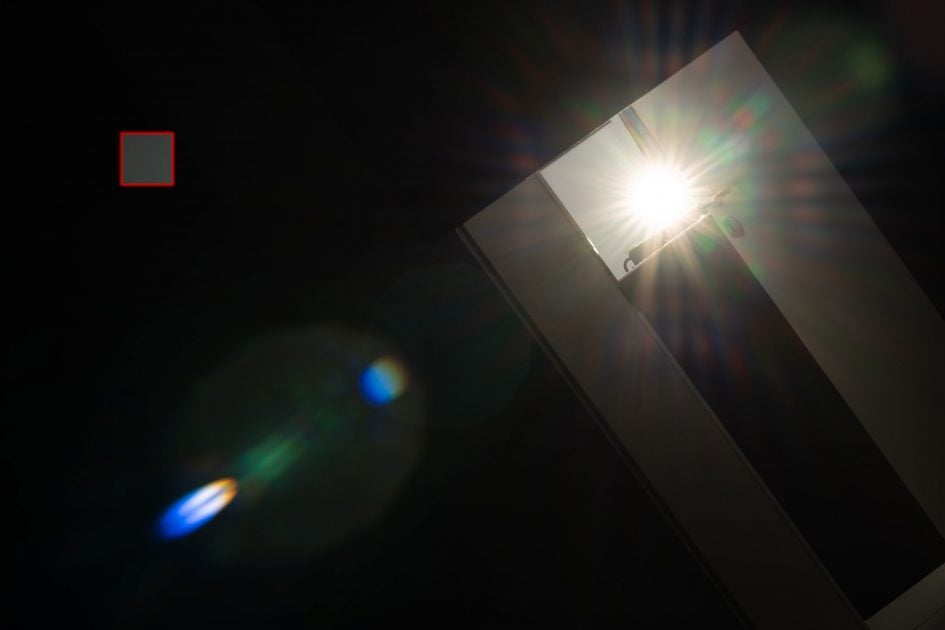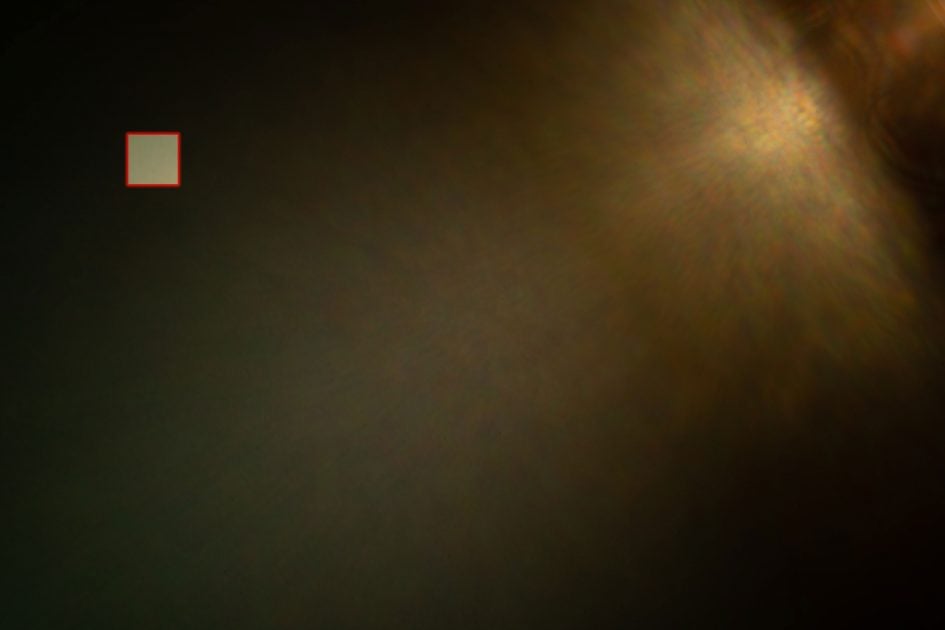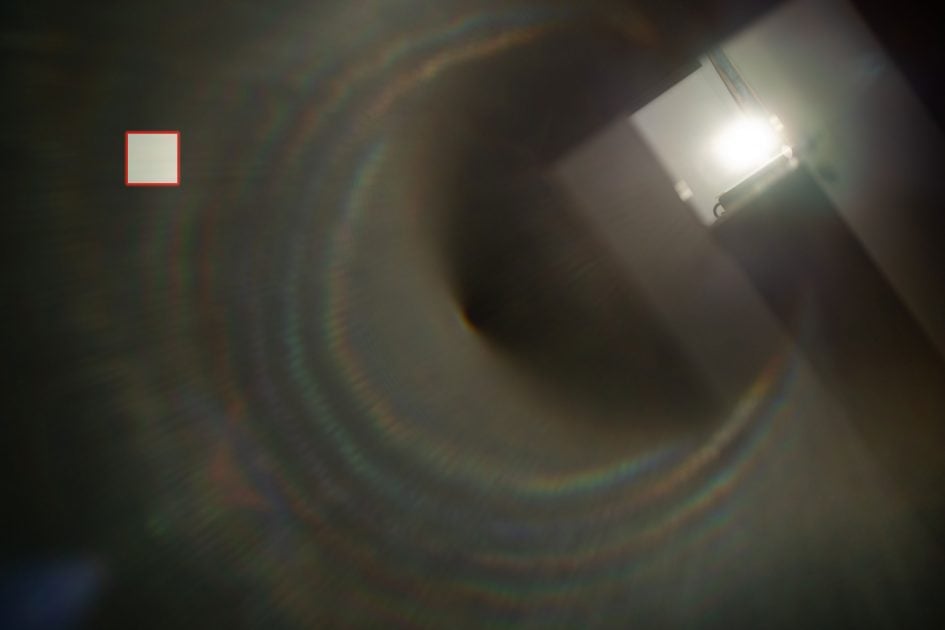Zhongyi Mitakon Speedmaster 85mm f1.2 review
-
-
Written by Thomas
Quality
Longitudinal Chromatic Aberration and focus shift
Lenses with bright focal ratios are often prone to longitudinal color aberrations (loCA, a.k.a. “axial color” or “bokeh CA”). These show up as magenta coloration in the foreground and greenish hues in the background and are not easily corrected in post-processing. The Mitakon 85mm f1.2 shows some magenta coloration even when stopped down to f2.8:
Mitakon 85mm f1.2 Longitudinal Chromatic Aberration (loCA)
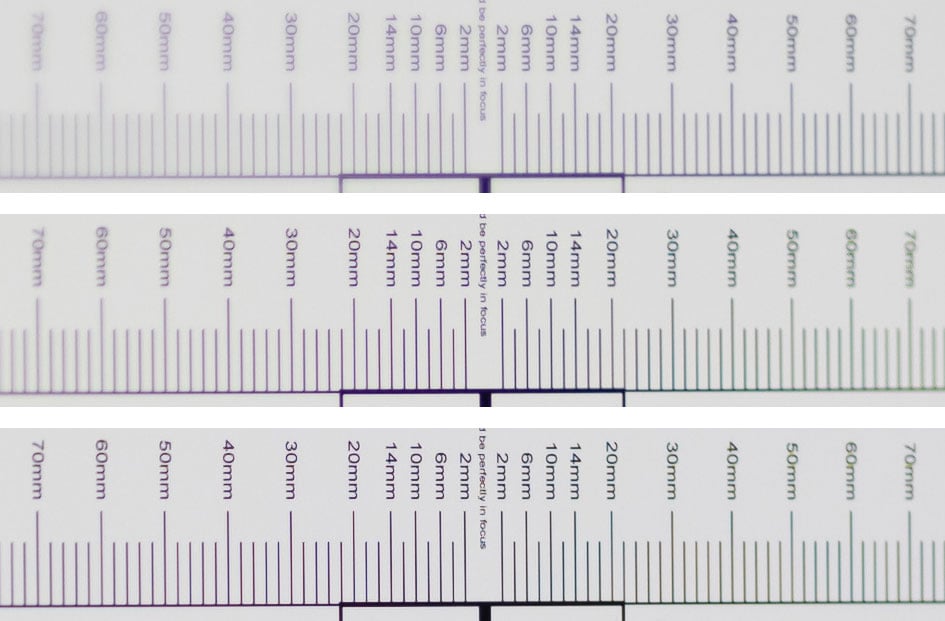
100% crops, from top to bottom: f1.2, f1.8, f2.8; left = foreground, right = background
The test also revealed that there is no focus shift to speak of: background and foreground become uniformly sharper when the lens is stopped down. For comparison have a look at the Viltrox AF 85mm f1.8 II and the Sigma 85mm f1.4 Art.
The following real life shot shows that the Mitakon 85mm f1.2 also produces purple fringing around high-contrast edges in the focal plane and some greenish outlining around background subjects.
Above: Mitakon 85mm f1.2 at f1.2; 100% crop; click image for 4k version, here for large original
Sharpness and contrast
As Zhongyi does not supply any MTF charts for the Mitakon 85mm f1.2 let’s jump straight to real life results from the sharpness test based on Siemens-stars. Processing was done in Lightroom 12.2/CRAW 15.2 from RAW to Adobe Color profile with CA compensation On but no other corrections from Adobe’s lens profile. Noise-reduction is set to 0, sharpening to 50/0.5/36/10, with no extra tone, color, or saturation adjustment. White-balance was adjusted to a neutral white and I did some exposure compensation to make the brightness of all crops match. So you will not see light fall-off in the corners.
The following 100% crops show the Mitakon 85mm f1.2 from f1.2 down to f11 compared to the Nikon Z 85mm f1.2 S, Nikon Z 85mm f1.8 S, Sigma Art 85mm f1.4 HSM (shot on Nikon D810), and Sony FE 85mm f1.4 GM (shot on Sony A7R II).
Mitakon 85mm f1.2 compared; 100% crop from center, APS-C/DX-corner, FF/FX-corner

Above: Mitakon 85mm f1.2 at f1.2

Above: Nikon Z 85mm f1.2 S at f1.2; also available at f1.4, f1.8, f2.0, f2.8, f4.0, f5.6, f8.0, f11
Compared to Nikon’s flagship Z 85mm f1.2 S lens the Mitakon looks decidedly soft and low contrast. But there is still some fine detail in the center and FF/FX-corner which could be salvaged by cranking contrast/sharpening up in post-processing. But the APS-C/DX-corner suffers from strong astigmatism which cannot easily be alleviated. I also had to re-focus for each crop quite a bit as field-curvature of the Mitakon is pretty strong.
At f1.4 the Sigma Art 85mm f1.4 HSM and Sony FE 85mm f1.4 GM enter the competition and are clearly sharper and show more contrast than the Mitakon although to be fair: both lenses benefit a bit from being shot on slightly lower resolution bodies.

Above: Mitakon 85mm f1.2 at f1.4

Above: Sigma Art 85mm f1.4 HSM shot on a 36MP Nikon D810 at f1.4; also available at f2.0, f2.8, f4.0, f5.6, f8.0, f11

Above: Sony FE 85mm f1.4 GM shot on a 42MP Sony A7R II at f1.4; also available at f1.7, f2.0, f2.8, f4.0, f5.6, f8.0, f11
Stopping down to f1.8 finally gives the center of the Mitakon 85mm f1.2 a boost in acuity but the APS-C/DX-corner is still mushy. The Nikon Z 85mm f1.8 S and Viltrox AF 85mm f1.8 II now enter the comparison and prove to be sharper than the Mitakon outside the center.

Above: Mitakon 85mm f1.2 at f1.8

Above: Nikon Z 85mm f1.8 S at f1.8; also available at f2.0, f2.8, f4.0, f5.6, f8.0, f11

Above: Viltrox AF 85mm f1.8 II at f1.8; also available at f2.0, f2.8, f4.0, f5.6, f8.0, f11
Stopping the Mitakon 85mm f1.2 further down shows that from f2.8 onwards the lens also produces a pretty good FF/FX-corner but the APS-C/DX-corner still needs further stopping down to catch up:

Above: Mitakon 85mm f1.2 at f2.0

Above: Mitakon 85mm f1.2 at f2.8

Above: Mitakon 85mm f1.2 at f4.0

Above: Mitakon 85mm f1.2 at f5.6; also available at f8.0, f11
Performance at long distances
The Siemens-star test-targets are shot at a distance of 45x focal length (i.e. at around 4m for 85mm focal length). But performance of lenses also depends on the shooting distance. Therefore I present another series of test-shots of a city around 1 km away. Processing was done in Lightroom 12.2/CRAW 15.2 from RAW to Adobe Color profile with CA compensation On but no other corrections from Adobe’s lens profile. Noise-reduction is set to 0, sharpening to 50/0.5/36/10, with no extra tone, color, or saturation adjustment. All shots were made from a heavy tripod at ISO 64 and image stabilization switched off.
The following images show the complete scene wide open plus 100% crops from the center, APS-C/DX-corner, and FF/FX-corner at various apertures. All crops in a row are from the same image so there is no compensation for field-curvature. You can access the large originals but please respect our copyright and only use those images for personal use.
When doing the following test-shots I encountered two problems with the Mitakon: Unlike other (manual focus) lenses the Mitakon had a hard stop at infinity which seemed to be a bit before “real” infinity focus could be achieved. I tested this multiple times but came to the same conclusion: The center crops could have been a bit sharper if the focus ring was allowed to be turned just a tad beyond the infinity mark on the barrel. This could be an individual problem of my copy of the lens but as different temperatures tend to change the length of a metal lens barrel it is never a good idea to have a hard stop exactly at the infinity mark. The other problem was pronounced field-curvature on the right side which made me take the crops for the APS-C/DX- and FF/FX-corner from the left/better side. Both issues might not affect your intended use of the Mitakon as they are of little relevance for portrait-shooting. But in this specific test-case the Mitakon had to be stopped down to f4.0 to produce a sharp center and acceptable resolution towards the corners.
Above: Mitakon 85mm f1.2; click image for 4k version, large original available at f1.2, f2.0

Above: Mitakon 85mm f1.2 S at f1.2

Above: Mitakon 85mm f1.2 at f1.4

Above: Mitakon 85mm f1.2 at f1.8

Above: Mitakon 85mm f1.2 at f2.0

Above: Mitakon 85mm f1.2 at f2.8

Above: Mitakon 85mm f1.2 at f4.0; also available at f5.6, f8.0
Vignetting and distortions
To make it easier to see light fall-off in the corners of a full-frame sensor I’ve arranged a series of three shots each with the Mitakon 85mm f1.2 from f1.2 to f2.0. All images were shot in RAW and developed to the same brightness in the center and are shown as is (1st row) resp. with manual vignetting correction of +50, +40, and +20 (2nd row). I didn’t use the profile supplied by Adobe as it lifted the FF/FX-corner at f1.2 only by 0.15EV – definitely too little. The sample images below show that without correction vignetting is pretty strong at f1.2 and f1.4:
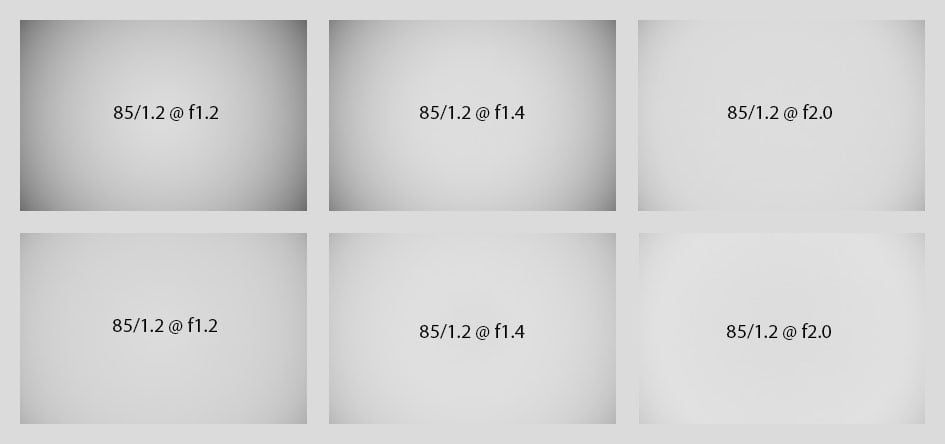
Above: Mitakon 85mm f1.2 at f1.2, f1.4, f2.0
Barrel distortions of the Mitakon 85mm f1.2 are pretty mild and are easily corrected from RAW with Adobe’s lens profile or from JPGs with a correction of +2:
Distortions: Mitakon 85mm f1.2, as is (top) / with +2 correction in Lightroom (bottom)
Rendering of point-light sources at night-shots
Night-shots pose a different challenge for lenses as the contrast is even higher than under bright sun and point-light sources can reveal some weaknesses such as coma, haloing and colour-aberrations that do not show up as prominently in other test-shots. The 100% crops below the main image show the effect of coma in the FX-corner of the Mitakon 85mm f1.2 at various apertures:
Above: Mitakon 85mm f1.2 at f1.2; click image for 4k version, here for large original

Above from left to right: Mitakon 85mm f1.2; 100% crops from the FX-corner at f1.2, f1.4, f2.0
Coma of the Mitakon 85mm f1.2 is relatively well controlled (the “wings” are pretty short and stubby) but there are some conspicuous spikes even at f2.0 which might result from diffraction. There are also strong blue halos around street lights within the APS-C/DX image-circle at f1.2 which are much reduced by f1.8 and practically gone by f2.0.
Bokeh quality
This test is for the rendering of point-light sources in an out-of-focus background. The circle of confusion that is produced by this test is pretty indicative of Bokeh performance in the background. Ideally the out-of-focus image of the point-light is evenly lit and perfectly circular, with no “onion-rings”, and without coloration. Large aperture lenses normally produce an effect known as “cat’s eye” the further away from the optical axis the point-light is projected. This is due to optical vignetting in the lens barrel when light enters the lens from an angle.
The following crops at different apertures are from near the center, APS-C/DX-corner, and FF/FX-corner resized to make them comparable across all my reviews.
Above: Mitakon 85mm f1.2 at f1.2; click image for 4k version
Above: Mitakon 85mm f1.2 at f1.2; click image for 100% crops
Above: Mitakon 85mm f1.2 at f1.4; click image for 100% crops
Above: Mitakon 85mm f1.2 at f1.8; click image for 100% crops
Above: Mitakon 85mm f1.2 at f2.8; click image for 100% crops
The diameter of the Bokeh balls in the center is determined by the entrance pupil of the lens. So, at their respective largest aperture the Mitakon 85mm f1.2 produces 50% bigger ones than any 85mm f1.8 lens. Onion rings or texture within the Bokeh balls of the Mitakon 85mm f1.2 is a non-issue but there is some mild outlining with a slight green coloration to it. Cat’s eyes towards the corners are pretty prominent at f1.2 and f1.4 and might lead to “swirly” Bokeh. And the edges of the aperture blades can clearly be seen from f2.8 onwards.
Let’s see how this analysis of out-of-focus point-light sources translates into Bokeh-performance shooting a book-shelf. Crops are from the foreground, middle-ground, and background resized to make them comparable across all my reviews:
Above: Mitakon 85mm f1.2 at f1.2
Above: Mitakon 85mm f1.2 at f1.2; click image for 4k version, also available as large original at f1.2, f1.8
Above: Nikon Z 85mm f1.2 S at f1.2; click image for 4k version, also available as large original at f1.2, f1.8

Above: Sigma Art 85mm f1.4 HSM on a Nikon D810 at f1.4; click image for 4k version, large original available at f1.4, f1.8, f2.0, f2.8, f4.0, f5.6, f8.0

Above: Sony FE 85mm f1.4 GM on a Sony A7R II at f1.4; click image for 4k version, large original available at f1.4, f1.7, f2.0, f2.8, f4.0, f5.6, f8.0

Above: Nikon Z 85mm f1.8 S at f1.8; click image for 4k version, here for large original
Above: Viltrox AF 85mm f1.8 II at f1.8; click image for 4k version, here for large original
The Nikon Z 85mm f1.2 S clearly produces the softest transition zone behind the point of focus and background blur. The Sigma and Sony score second and third place in this comparison and while both f1.8 lenses are not bad they are clearly hampered by their smaller entrance pupil. Interestingly the Mitakon cannot score better than the f1.4 lenses as it produces a rather “squiggly” and nervous Bokeh in the middle- and background. Only its (less important) foreground is blurred smoothly.
Looking at another crop (now at 100%) from the same images showing the ruler confirms again, that the Nikon Z 85mm f1.2 S has the smoothest transition zone with no tendency for double contours which mar the Bokeh of the Mitakon.

Above: Mitakon 85mm f1.2 at f1.2; click image for 4k version, also available as large original at f1.2, f1.8

Above: Nikon Z 85mm f1.2 S at f1.2; click image for 4k version, also available as large original at f1.2, f1.8

Above: Sigma Art 85mm f1.4 HSM on a Nikon D810 at f1.4; click image for 4k version, large original available at f1.4, f1.8, f2.0, f2.8, f4.0, f5.6, f8.0

Above: Sony FE 85mm f1.4 GM on a Sony A7R II at f1.4; click image for 4k version, large original available at f1.4, f1.7, f2.0, f2.8, f4.0, f5.6, f8.0

Above: Nikon Z 85mm f1.8 S at f1.8; click image for 4k version, here for large original
Above: Viltrox AF 85mm f1.8 II at f1.8; click image for 4k version, here for large original
Still the Mitakon 85mm f1.2 can produce double contours in the farther background like in this torture test with branches against a bright sky.
Now, if you’re curious how this all shapes up when shooting portraiture have a look at the next section.
Portrait performance
85mm focal length is the classical choice for portraits on a full-frame camera for upper body or full body shots. Let’s see how the new Mitakon fares in this use-case. All shots were freshly focused manually for each shot. Still there are some slight focus-differences which inevitably occur when you shoot a living, breathing subject.
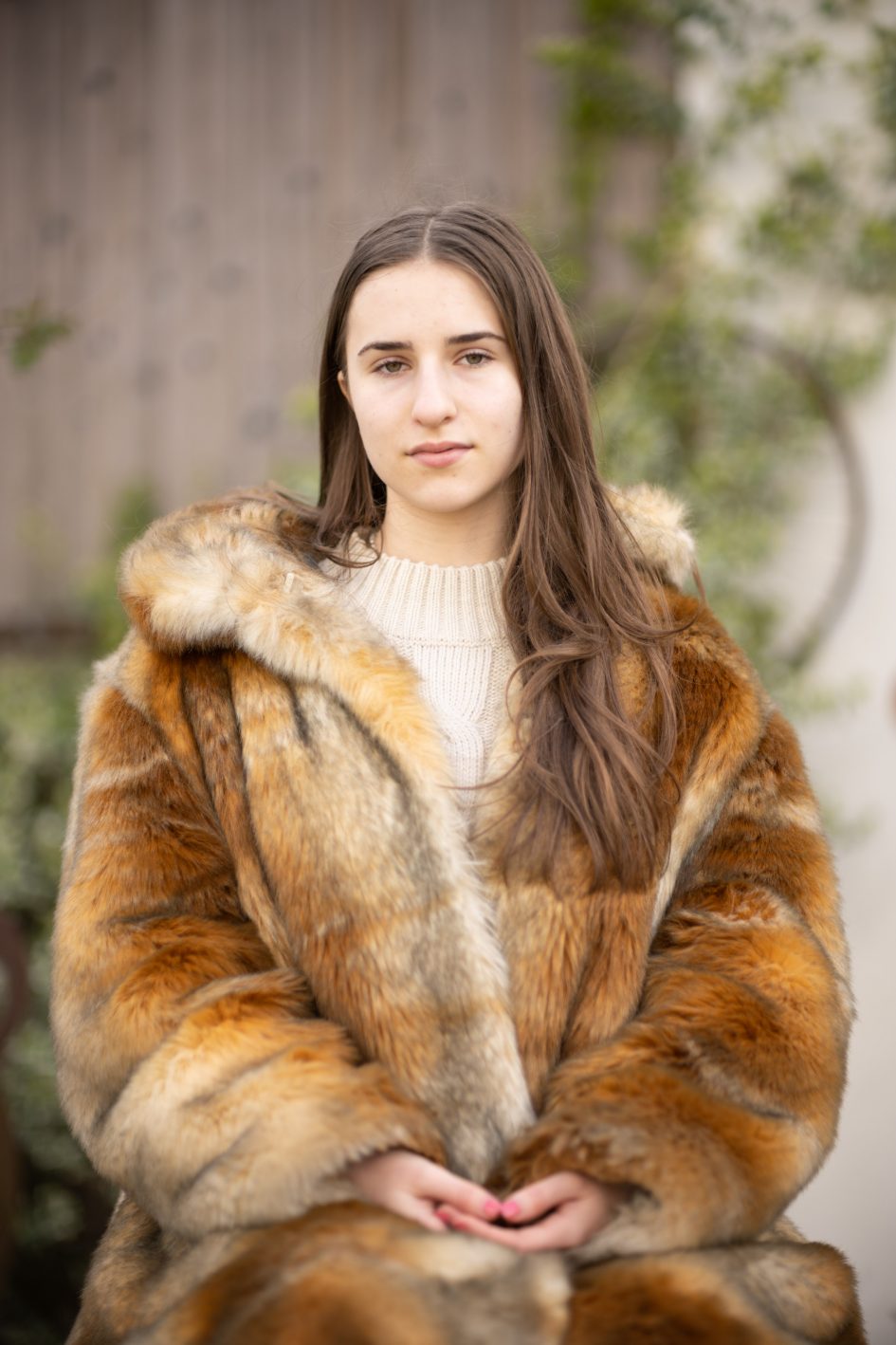
Above: Mitakon 85mm f1.2 at f1.2; click image for 4k version, large original available at f1.2, f1.4, f1.8, f2.0, f2.8

Above: Mitakon 85mm f1.2 at f1.2, 50% crop; click image to view 100% crop
Like in the tests before the Mitakon renders a pretty soft image when used wide open up to f1.8. It sharpens up visibly at f2.0 and gains further in detail and contrast at f2.8. Background Bokeh looks a bit nervous even wide open.
Flare, ghosting, and sunstars
Catching a strong light-source shining directly into the lens is always a risky business: it could produce strange colorful ghost-images or reduce contrast considerably through flare and glare. The appearance of flare and ghosting depends on factors like the aperture and the angle of the light hitting the lens. To judge the proclivity of Zhongyi’s Mitakon 85mm f1.2 for these artifacts I went through a series of well calculated shots against a strong light source to provoke glare and ghosting. The lens hood was mounted in all shots. Following are three of the more extreme example results. The little bright square inset in the upper left shows the respective area with an exposure compensation of +3 EV to make it easier to see which levels of black the lens renders at that point:
Above: Flare and ghosting. Strong light hitting the Mitakon 85mm f1.2 at f11; click image for 4k version or here for +3 EV exposure compensation
At f11 the Mitakon produces an amount of flares, ghosts and veiling glare similar to the Nikon Z 85mm f1.2 S – as long as the light source is inside the frame. With the light just outside the corners there’s the danger of a huge flare but only at a relatively limited angle of incidence:
Above: Flare and ghosting. Strong light hitting the Mitakon 85mm f1.2 at f11; click image for 4k version or here for +3 EV exposure compensation
Wide open the Mitakon behaves even worse with extremely reduced contrast. And this happens over a wide range of angles where the light source is inside the frame. Even outside the frame strong light sources can reduce the contrast of the Mitakon considerably at f1.2:
Above: Flare and ghosting. Strong light hitting the Mitakon 85mm f1.2 at f1.2; click image for 4k version or here for +3 EV exposure compensation
This is one of the worst examples / instances against contra light I’ve encountered in any of my lens tests to date.
Sunstars develop at f4.0 already and look very nice:

Above from left to right: Sunstars from the Mitakon 85mm f1.2 at f4.0, f5.6, f8.0, 100% crops
Next check out my sample images!
Check prices on the Zhongyi Mitakon Speedmaster 85mm f1.2 at B&H or Adorama. Alternatively get yourself a copy of my In Camera book, an official Cameralabs T-shirt or mug, or treat me to a coffee! Thanks!
